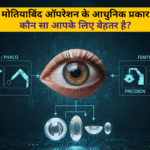Understanding Conjunctivitis
Conjunctivitis, commonly referred to as “pink eye,” is an inflammation of the conjunctiva, the thin, transparent layer of tissue covering the white part of the eye and the inner surface of the eyelids. It can be caused by infections, allergies, or irritants and often results in redness, itching, and discharge.
The conjunctiva serves as a protective barrier for the eye, but when inflamed, it can lead to discomfort and vision disturbances. Understanding the different causes and symptoms of conjunctivitis is crucial in determining the appropriate treatment and preventive measures.
Causes of Conjunctivitis
Viral Conjunctivitis
Viral conjunctivitis is the most common type and is highly contagious. It is usually caused by adenoviruses and can spread through direct contact with an infected person, contaminated surfaces, or respiratory droplets.
Symptoms often include excessive tearing, eye redness, light sensitivity, and a watery discharge. Unlike bacterial conjunctivitis, viral conjunctivitis does not typically produce thick pus-like discharge. It usually starts in one eye and may spread to the other within a few days.
Since there is no specific antiviral treatment, management focuses on symptom relief. Applying cold compresses and using artificial tears can help soothe irritation. The infection typically resolves on its own within one to two weeks.
Bacterial Conjunctivitis
Bacterial conjunctivitis is caused by bacteria such as Staphylococcus aureus, Streptococcus pneumoniae, and Haemophilus influenzae. It often leads to a thick, yellow or green discharge, causing the eyelids to stick together, especially after sleep.
This type of conjunctivitis spreads through direct or indirect contact with contaminated hands, towels, or cosmetics. Poor hygiene practices, such as not washing hands regularly or sharing personal items, increase the risk of infection.
Antibiotic eye drops or ointments are typically prescribed to shorten the duration of bacterial conjunctivitis and reduce its contagiousness. Proper hygiene and avoiding contact with infected individuals can help prevent its spread.
Allergic Conjunctivitis
Allergic conjunctivitis is triggered by allergens such as pollen, dust, mold, pet dander, and certain chemicals. Unlike viral and bacterial conjunctivitis, it is not contagious.
Common symptoms include:
- Intense itching and redness
- Watery discharge
- Swelling of the eyelids
- Sensitivity to light
Allergic conjunctivitis can be seasonal (due to pollen) or perennial (due to dust mites or pet dander). Antihistamine eye drops, cold compresses, and avoiding allergens can provide relief. In severe cases, a doctor may recommend prescription-strength anti-inflammatory eye drops.
Irritant-Induced Conjunctivitis
This type of conjunctivitis occurs when foreign substances, such as smoke, chlorine, or harsh chemicals, come into contact with the eye, causing irritation and inflammation.
Symptoms often subside once the irritant is removed. Rinsing the eyes with clean water or saline solution can help alleviate discomfort. If symptoms persist, consulting an eye specialist is recommended.
Symptoms of Conjunctivitis
Conjunctivitis symptoms vary depending on the cause but generally include:
- Redness: Due to blood vessel dilation in response to infection or irritation.
- Watery or thick discharge: Viral conjunctivitis typically causes watery discharge, while bacterial conjunctivitis produces a thicker, yellow-green discharge.
- Itching or burning sensation: Common in allergic conjunctivitis.
- Swollen eyelids: Due to inflammation and irritation.
- Increased sensitivity to light: Some individuals experience discomfort in bright environments.
- Grittiness or foreign body sensation: Patients often describe feeling like there is something in their eye.
How Does Conjunctivitis Spread?
Viral and Bacterial Transmission
Both viral and bacterial conjunctivitis are highly contagious and can spread through:
- Direct contact: Touching the eyes with unclean hands.
- Contaminated objects: Sharing towels, eye makeup, or contact lenses.
- Airborne droplets: Coughing or sneezing can release viral particles that lead to infection.
Myths About Conjunctivitis Spread
- Does conjunctivitis spread by eye contact? No, it does not spread merely by looking at an infected person’s eyes.
- How does conjunctivitis spread? It primarily spreads through direct physical contact or airborne droplets in the case of viral conjunctivitis.
Duration of Conjunctivitis
- How long does conjunctivitis last? The duration depends on the type:
- Viral conjunctivitis: Typically lasts 1 to 2 weeks.
- Bacterial conjunctivitis: Resolves in 5 to 7 days with treatment.
- Allergic conjunctivitis: Persists as long as exposure to allergens continues.
- Irritant-induced conjunctivitis: Symptoms improve once the irritant is removed.
- How long will conjunctivitis last? Proper treatment and hygiene can help manage symptoms faster.
Preventive Measures
Some of the best preventive measures for conjunctivitis (pink eye) are:
- Wash hands frequently
- Avoid touching or rubbing eyes
- Do not share towels, makeup, or contact lenses
- Disinfect frequently touched surfaces
- Wear protective eyewear when exposed to irritants
Treatment Options for Conjunctivitis
How to Cure Conjunctivitis
Treatment depends on the cause. Here are some treatments based on specific causes:
- Viral conjunctivitis: No specific medication; symptom relief with lubricating drops and cold compresses.
- Bacterial conjunctivitis: Antibiotic eye drops or ointments help speed recovery.
- Allergic conjunctivitis: Antihistamines, artificial tears, and allergen avoidance provide relief.
- Irritant-induced conjunctivitis: Rinsing with clean water and avoiding further exposure to irritants is recommended.
Are your symptoms worsening? Schedule a consultation
FAQs
The answer to Is conjunctivitis contagious is, yes, viral and bacterial conjunctivitis are contagious, while allergic and irritant-induced conjunctivitis are not.
Common symptoms include redness, itching, swelling, excessive tearing, and discharge.
It can be caused by viruses, bacteria, allergens, or irritants such as smoke and chemicals.
Maintain proper hygiene, avoid touching your eyes, and do not share personal items.
If it is viral or bacterial, avoid work or school until symptoms subside and a doctor confirms it is no longer contagious.
Seek medical attention if symptoms worsen, vision becomes impaired, or if pain and swelling are severe.





